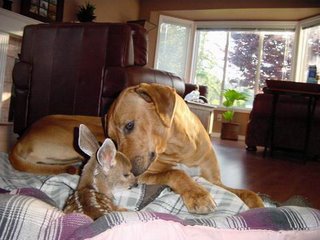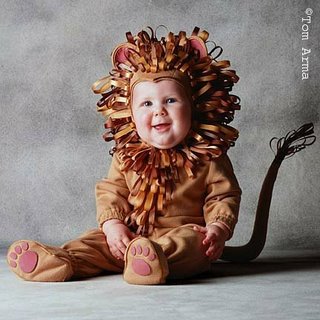
A child goes after another with a pair of scissors. One child repeatedly slaps another. Another child doubles up his fist and threatens a teacher’s life. The question is, why do some children respond to life like that, while others respond with affection, love, smiles and hugs? Why do some children like bean soup and pumpkin pie, while others like pop tarts and pop tarts?
Anger is a passion. It is neither a positive nor a negative passion because passions are neither negative nor positive. It is simply a passion which either leads us to vice or virtue. The interesting thing about anger is there is no antitesis like the other ten passions like love and hate, and pleasure and pain.
What to do about anger is not much at all unless the anger is “inordinate” which means “out of control.” Anger that is out of control seeks vice; it seeks to do harm and that is the control issue we are primarily concerned with.
Anger is simply anger until it does harm. If Adolf Hitler spent his life angry who would have cared? Big deal, so he’s angry, but he not only spent his life “honked off,” he spent his life acting on his anger and as a result killed or had 15 million people gassed, starved and beaten to death.
With a child, the idea is to remove the child from doing harm to himself and to others, but not only does the child have to cooperate, he has to want to cooperate. Dragging a child off to a place of safety when a child is angry means anything and everything in his path will take abuse and the level of work to get him there will be completely bogus if he won’t stay.
So the idea is to get the jump on the child and have him agree to go to a place of safety with a reward attached to his keeping ordinant about his anger.
Anger is one child glitch. There are lots of glitches to rearing children like the kid who can’t keep marbles out of her mouth. That’s about the boy who cried wolf. I’m glad the ambulance is only four minutes away. Childcare – it’s a challenge!
Anyway, here’s an article about anger:
Helping Young Children
Deal with Anger
Children’s anger presents challenges to teachers committed to constructive, ethical, and effective child guidance. This Digest explores what we know about the components of children’s anger, factors contributing to understanding and managing anger, and the ways teachers can guide children’s expressions of anger.
Three Components of Anger
Anger is believed to have three components (Lewis & Michalson, 1983):
The Emotional State of Anger. The first component is the emotion itself, defined as an affective or arousal state, or a feeling experienced when a goal is blocked or needs are frustrated. Fabes and Eisenberg (1992) describe several types of stress-producing anger provocations that young children face daily in classroom interactions:
- Conflict over possessions, which involves someone taking children’s property or invading their space.
- Physical assault, which involves one child doing something to another child, such as pushing or hitting.
- Verbal conflict, for example, a tease or a taunt.
- Rejection, which involves a child being ignored or not allowed to play with peers.
- Issues of compliance, which often involve asking or insisting that children do something that they do not want to do–for instance, wash their hands.
Expression of Anger. The second component of anger is its expression. Some children vent or express anger through facial expressions, crying, sulking, or talking, but do little to try to solve a problem or confront the provocateur. Others actively resist by physically or verbally defending their positions, self-esteem, or possessions in nonaggressive ways. Still other children express anger with aggressive revenge by physically or verbally retaliating against the provocateur. Some children express dislike by telling the offender that he or she cannot play or is not liked. Other children express anger through avoidance or attempts to escape from or evade the provocateur. And some children use adult seeking, looking for comfort or solutions from a teacher, or telling the teacher about an incident.
Teachers can use child guidance strategies to help children express angry feelings in socially constructive ways. Children develop ideas about how to express emotions (Michalson & Lewis, 1985; Russel, 1989) primarily through social interaction in their families and later by watching television or movies, playing video games, and reading books (Honig & Wittmer, 1992). Some children have learned a negative, aggressive approach to expressing anger (Cummings, 1987; Hennessy et al., 1994) and, when confronted with everyday anger conflicts, resort to using aggression in the classroom (Huesmann, 1988). A major challenge for early childhood teachers is to encourage children to acknowledge angry feelings and to help them learn to express anger in positive and effective ways.
An Understanding of Anger. The third component of the anger experience is understanding–interpreting and evaluating–the emotion. Because the ability to regulate the expression of anger is linked to an understanding of the emotion (Zeman & Shipman, 1996), and because children’s ability to reflect on their anger is somewhat limited, children need guidance from teachers and parents in understanding and managing their feelings of anger.
Understanding and Managing Anger
The development of basic cognitive processes undergirds children’s gradual development of the understanding of anger (Lewis & Saarni, 1985).
Memory. Memory improves substantially during early childhood (Perlmutter, 1986), enabling young children to better remember aspects of anger-arousing interactions. Children who have developed unhelpful ideas of how to express anger (Miller & Sperry, 1987) may retrieve the early unhelpful strategy even after teachers help them gain a more helpful perspective. This finding implies that teachers may have to remind some children, sometimes more than once or twice, about the less aggressive ways of expressing anger.
Language. Talking about emotions helps young children understand their feelings (Brown & Dunn, 1996). The understanding of emotion in preschool children is predicted by overall language ability (Denham, Zoller, & Couchoud, 1994). Teachers can expect individual differences in the ability to identify and label angry feelings because children’s families model a variety of approaches in talking about emotions.
Self-Referential and Self-Regulatory Behaviors.Self-referential behaviors include viewing the self as separate from others and as an active, independent, causal agent. Self-regulation refers to controlling impulses, tolerating frustration, and postponing immediate gratification. Initial self-regulation in young children provides a base for early childhood teachers who can develop strategies to nurture children’s emerging ability to regulate the expression of anger.
Guiding Children’s Expressions of Anger
Teachers can help children deal with anger by guiding their understanding and management of this emotion. The practices described here can help children understand and manage angry feelings in a direct and nonaggressive way.
Create a Safe Emotional Climate. A healthy early childhood setting permits children to acknowledge all feelings, pleasant and unpleasant, and does not shame anger. Healthy classroom systems have clear, firm, and flexible boundaries.
Model Responsible Anger Management. Children have an impaired ability to understand emotion when adults show a lot of anger (Denham, Zoller, & Couchoud, 1994). Adults who are most effective in helping children manage anger model responsible management by acknowledging, accepting, and taking responsibility for their own angry feelings and by expressing anger in direct and nonaggressive ways.
Help Children Develop Self-Regulatory Skills. Teachers of infants and toddlers do a lot of self-regulation “work,” realizing that the children in their care have a very limited ability to regulate their own emotions. As children get older, adults can gradually transfer control of the self to children, so that they can develop self-regulatory skills.
Encourage Children to Label Feelings of Anger. Teachers and parents can help young children produce a label for their anger by teaching them that they are having a feeling and that they can use a word to describe their angry feeling. A permanent record (a book or chart) can be made of lists of labels for anger (e.g., mad, irritated, annoyed), and the class can refer to it when discussing angry feelings.
Encourage Children to Talk About Anger-Arousing Interactions. Preschool children better understand anger and other emotions when adults explain emotions (Denham, Zoller, &Couchoud, 1994). When children are embroiled in an anger-arousing interaction, teachers can help by listening without judging,evaluating, or ordering them to feel differently.
Use Books and Stories about Anger to Help Children Understand and Manage Anger. Well-presented stories about anger and other emotions validate children’s feelings and give information about anger (Jalongo, 1986; Marion, 1995). It is important to preview all books about anger because some stories teach irresponsible anger management.
Communicate with Parents. Some of the same strategies employed to talk with parents about other areas of the curriculum can be used to enlist their assistance in helping children learn to express emotions. For example, articles about learning to use words to label anger can be included in a newsletter to parents.
Children guided toward responsible anger management are more likely to understand and manage angry feelings directly and non aggressively and to avoid the stress often accompanying poor anger management (Eisenberg et al., 1991). Teachers can take some of the bumps out of understanding and managing anger by adopting positive guidance strategies.







